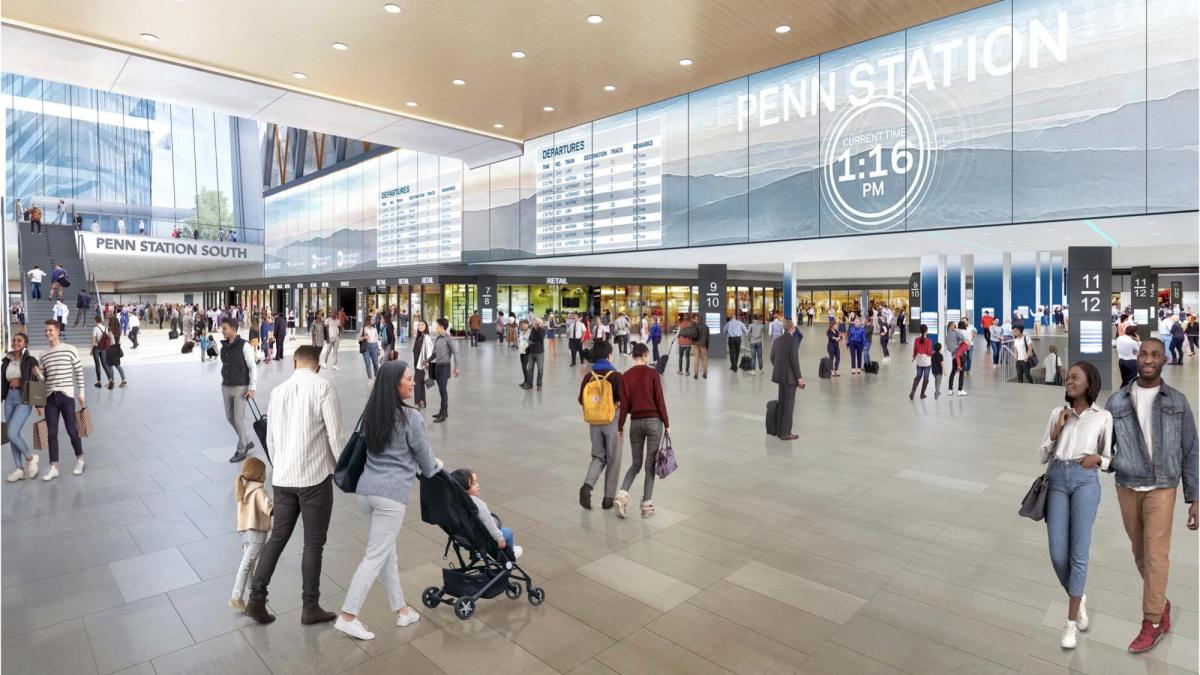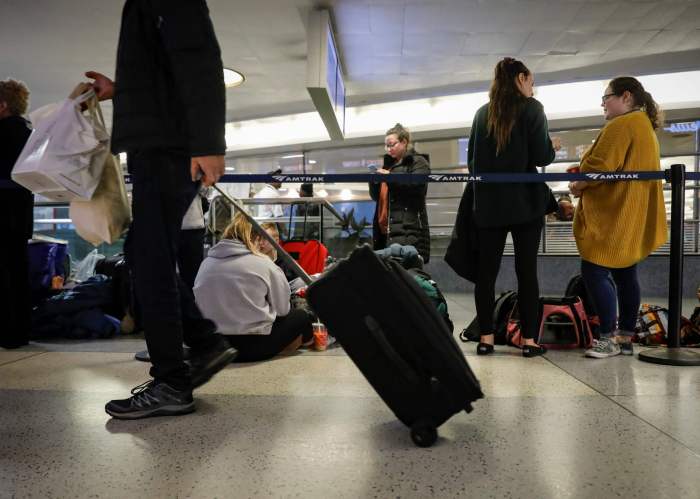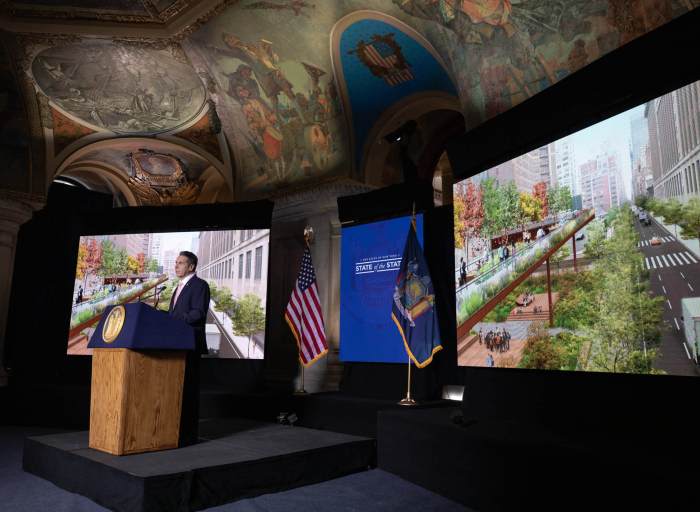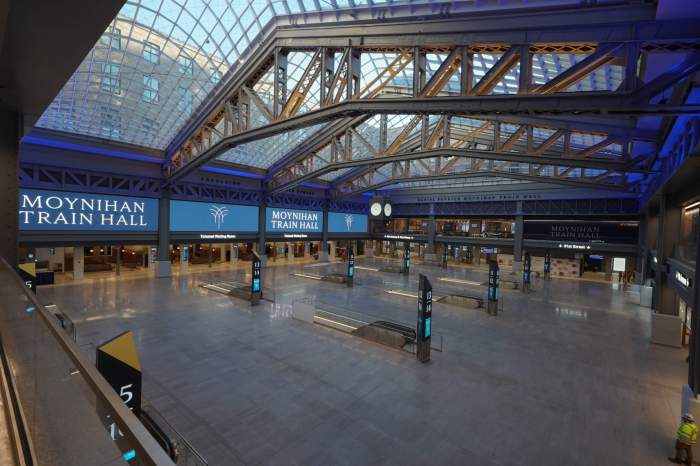Governor Kathy Hochul announced the state will start soliciting designs for her $7 billion plan to beautify Penn Station Thursday.
Architectural and engineering firms will have until July 28 to submit proposals to the Metropolitan Transportation Authority to give the notoriously-cramped station a facelift, the governor said at the Moynihan Train Hall on June 9.
“The glory days are coming back,” Hochul said during a press conference at the Midtown station.
“We are taking an enormous step toward righting one of the wrongs of the past 60 years,” she added. “This time we’re going to get it right.”
The MTA’s so-called request for proposals went live Thursday afternoon, and officials will choose a winning bid by late summer or early fall, Hochul said.
The governor adopted plans by her predecessor Andrew Cuomo to revamp Penn Station and fund the project through taxes from a massive real estate redevelopment scheme made up of 10 predominantly-commercial buildings surrounding the station.
The largest share of the properties for redevelopment is owned or leased by developer Vornado Realty Trust, a big donor to Hochul’s election campaign.
The governor pared back Cuomo’s development proposal by about 7% of its size to 18.3 million square feet, while adding up to 1,800 residential apartments into the mix, 540 of which will be tied to income levels.
Empire State Development, the state’s development arm in charge of the real estate project, estimates that about 1,618,200 square feet will be residential, or just under 9% of the overall area.
The tax receipts from the real estate deal will help pay for the a new spacious single-level concourse on the east side of Penn Station which, at 250,000 square feet, will be larger than the Moynihan Train Hall and the main hall of Grand Central Station, Hochul said.
“[It will have a] 460 foot high atrium and a skylight that reminds you that, yes, the heavens are out there still despite the feeling that you may be living in hell. That is the experience we’re going to create,” Hochul said.
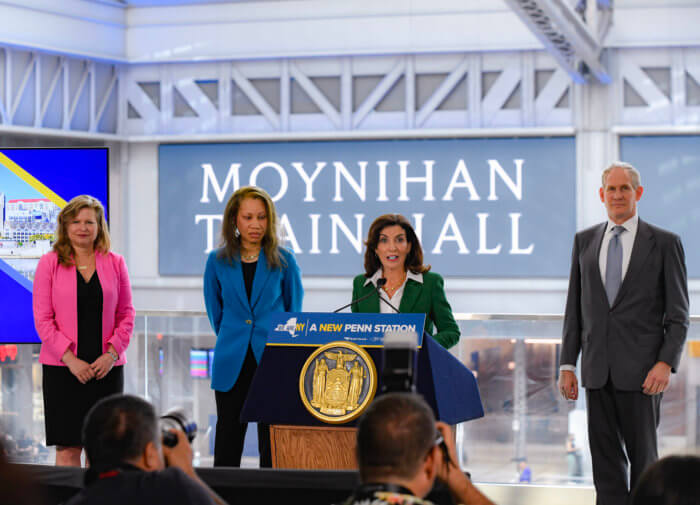
The makeover includes eight new entrances to the station, 18 new escalators and 11 new elevators to platforms, wider sidewalks outside and eight acres of added public space.
The project does not, however, add any new tracks or train capacity to the station, which served 600,000 riders a day pre-pandemic, making it the busiest transit hub in the Western Hemisphere.
Good government groups and city officials have criticized the development portion of the proposal as a giveaway to Hochul’s donors that could put New York taxpayers on the hook for $5 billion if the offices don’t fill up with people as originally planned due to shifting work habits amid the pandemic.
ESD has said the city would be “made whole for existing property taxes,” according to an April presentation.
Despite more people working from home, Hochul said it still made sense to build the huge mixed-use campus near transit.
“We believe this the place for new commercial buildings to be built,” she said.
According to a recent poll by NY1 and Siena College, almost one in three New Yorkers (32%) want to work from home entirely, while about one fifth (19%) would like to stay remote at least three days of the week.
But if offices don’t get fully occupied, Hochul said she would work with state lawmakers to allow landlords to convert them for other uses, comparing it to a new law the governor signed Monday enabling hotel conversions into housing.
“I also believe there’s opportunities for conversions of commercial, and we need a little more time to rethink the post-pandemic world,” Hochul said.
“We’re starting to see what that’s looking like, that everybody’s not coming back five days a week, they want the flexibility,” the governor added. “Albany and I will work together, legislators, to also give that flexibility.”
ESD’s board will consider and likely vote on the development project’s environmental impact statement at a June 30 meeting and vote on the overall proposal — officially dubbed the general project plan — at the following meeting in July, according to agency spokesperson Matthew Gorton.



